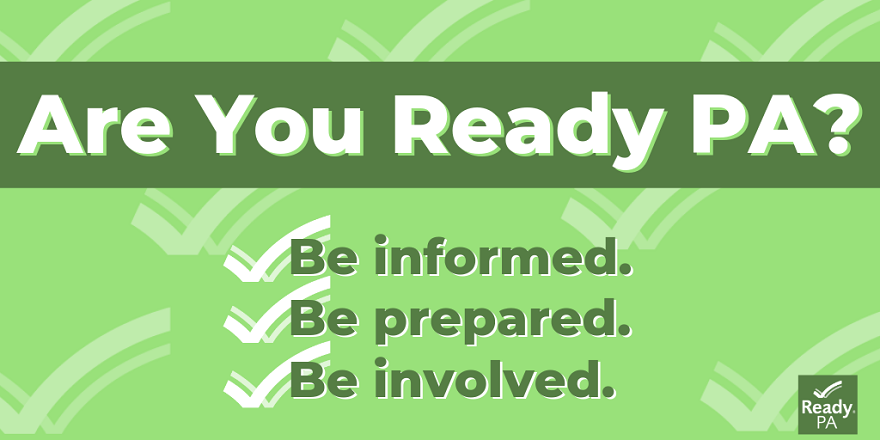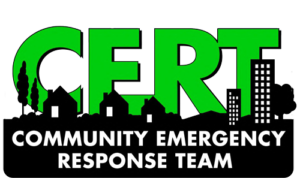
Sign Up for Alerts and Notifications
Sign up for alerts and notifications from the City of York.
You can manage notifications you get through the member portal once you have signed up at https://member.everbridge.net/311578402488633/new
Remember to check back regularly as new message types are added.
Why Prepare for a Disaster?
A disaster can strike without warning, forcing you to go for days without basic necessities or to evacuate your home. Relief workers will be on the scene following a disaster but may not be able to reach you immediately. If the situation is widespread, you could be on your own for several days.
You Need to be Prepared to Take Care of Yourself and Your Family.
Knowing the steps to take during a disaster–whether flooding, tornadoes, earthquakes, power outage or another crisis–can greatly reduce the danger and distress your family may face.
Sit Down with Your Family and Create a Written Plan.
There are templates below for creating a plan as well as checklists for items you should have in a home emergency kit, vehicle bags, as well as templates for emergency contact information.
Creating a Basic Emergency Plan
Emergency Preparedness Guide - English Emergency Preparedness Guide - SpanishHaving a plan is one of the most important steps you can take in disaster preparedness. Knowing what to do and how to do it can help your family manage disasters with less worry, fear and uncertainty.
- Identify a friend or relative who lives out of the area for family members to contact if you are separated.
- Write your plan down, use the links above to download a copy and copies are available in English and Spanish in the lobby at City Hall.
Family Emergency Communications Plan
Family Communication Plan for Kids - English Plan de Comunicaciόn Familiar Family Important Information - English Imformaciόn Importante FamiliarHaving a written family emergency communications plan is very important. If your cell phone dies, most people don’t know contact phone numbers. Having emergency information attached to the car seats (in a waterproof bag) is essential. If adult passengers are injured and unable to provide information, children will be able to provide contact information for another parent or trusted adult or provide emergency medical information such as allergies.
Older children, or even those who go to daycare or pre-school, should all have a copy in their backpacks.
You can use something like a 3×5 card or one of the downloadable forms.
We also now have pocket/wallet emergency information cards, in both English and Spanish, available in the lobby at City Hall.
Preparing a Disaster Supply Kit
Emergency Supply Checklist - English Lista de suministros de emergencia Lis Pwonvizyon Pou IjansHaving a disaster supply kit ready to take with you at a moment’s notice ensures that you will have necessary supplies no matter how fast you may need to evacuate.
Pack supplies in duffel bags or backpacks (often referred to as a “bug-out bag”) and keep them in a designated place.
Your kit will also come in handy if you must take shelter in your home. This list will help ensure that your disaster supply kit includes all the essentials.
Download one of the checklists above for a more complete list that you can use to build an emergency kit for your home. This will have additional quantities of supplies and include things like portable heaters, additional food, battery lanterns, etc.
-
Water
You can survive several days without food, but water is essential for life and health.
- Pack at least one gallon per person per day for at least 3 days.
- Store water in tightly sealed, non-breakable plastic, fiberglass or enamel-lined metal containers.
- Change your water every 6 months.
- Have a hand-pump water filter (the kind used by campers and backpackers).
Signs of dehydration include:
- Fatigue
- Dark-colored urine and low urine output
- Dry skin and cracked lips
- A headache
For CDC guidelines on making water safe to drink, please go here.
-
Food
- Pack enough food to last each family member at least 4 days.
- Include canned and boxed foods because they require little preparation and stay good for long periods of time. Remember to bring a manual can opener or to buy food in self-opening cans.
- Pack food in sealed metal or plastic containers.
- Rotate your stock, use older items first and replenish with newer items.
- Include food for infants and family members with special diets as well as for animals.
For tips on handling food following a disaster see the links below:
USDA Food and Nutrition Service
Food for emergencies – Ready.gov
Food Safety in a disaster – Foodsafety.gov -
Tools & Equipment
- Battery-powered or hand-crank AM/FM radio
- Flashlights
- Spare batteries
- Resealable plastic bags
- Washcloths and towels, wet wipes etc.
- Paper cups, paper plates, and plastic utensils
- Toothbrushes, toothpaste, shampoo, deodorant, and other toiletries
- Heavy-duty plastic garbage bags
- Change of clothing and an extra pair of shoes and socks for each person
- Blankets or a sleeping bag for each person
-
Personal Items
- Personal identification
- Cash
- Copies of birth and marriage certificates, inventory or household goods, bank account numbers, and other important documents (or scanned copies on a USB drive)
- Maps
- Extra car and house keys
- Prescription medications
- Needs for your pets (leash, folding bowl, toy, etc.)
-
First Aid Kit Essentials
- Adhesive bandages
- Antacids
- Antibiotic ointment
- Antidiarrhea medication
- Antiseptics
- Aspirin and non-aspirin pain reliever
- Cleansing agents (isopropyl alcohol, soap, germicide)
- Cotton balls
- First aid manual
- Gauze pads
- Non-latex gloves (i.e., Nitrile)
- Laxatives
- Moist towelettes
- Needle and safety pins
- Petroleum jelly
- Protective masks
- Scissors
- Sunscreen
- Thermometer
- Tongue depressors
- Triangular bandages
- Tweezers
Take a basic first aid class, such as those offered by the Red Cross.
Be Prepared for Power Outages
In the event of a power outage DO NOT call 911
You can use this Met-Ed interactive map to see outages in your area and to report an outage.
Follow these tips to keep safe:
- Use a battery lantern and flashlights – DO NOT use open candles.
- Keep freezers and refrigerators closed.
- A refrigerator will keep food cold for about four hours – if the outage is going to be extended use food in your fridge first.
- A full freezer will keep its temperature for about 48 hours.
- WHEN IN DOUBT, THROW IT OUT
- Only use generators outside of homes and away from windows.
- Do not run extension cords through water.
- Do not connect your generator to your house electrical box or into outlets (unless you have a transfer switch).
- Do not use a gas or portable propane stove to heat your home.
- Only use grills outside of homes and away from windows.
- Disconnect appliances and electronics to avoid damage from electrical surges when power is restored.
- Have an alternate plan for refrigerating medications or power-dependent medical devices.
- If the power has been out for more than a day, check with your pharmacist or doctor about using the medication.
- If the weather is excessive, check with local emergency management for locations of heating or cooling.
- Check on your neighbors.
Help Your Community

The City of York Department of Fire/Rescue Services and York County Office of Emergency Management is offering Community Emergency Response Team (CERT) training to residents.
CERT training promotes a partnering effort between emergency services and the people that they serve. The goal is for emergency personnel to train members of neighborhoods, community organizations or workplaces in basic emergency response skills.
For more information, click here.
Additional Emergency/Disaster Preparedness Resources
- York City Community Emergency Response Team (CERT) Program
- Pennsylvania Emergency Preparedness Information
- American Red Cross
- Federal Emergency Management Agency (FEMA)
- Institute for Business and Home Safety
- National Weather Service
- U.S. Centers for Disease Control & Prevention (CDC)
- U.S. Department of Energy
- U.S. Environmental Protection Agency (EPA)
- U.S. Fire Administration

